Top 10 Body Massage Techniques to Try Today
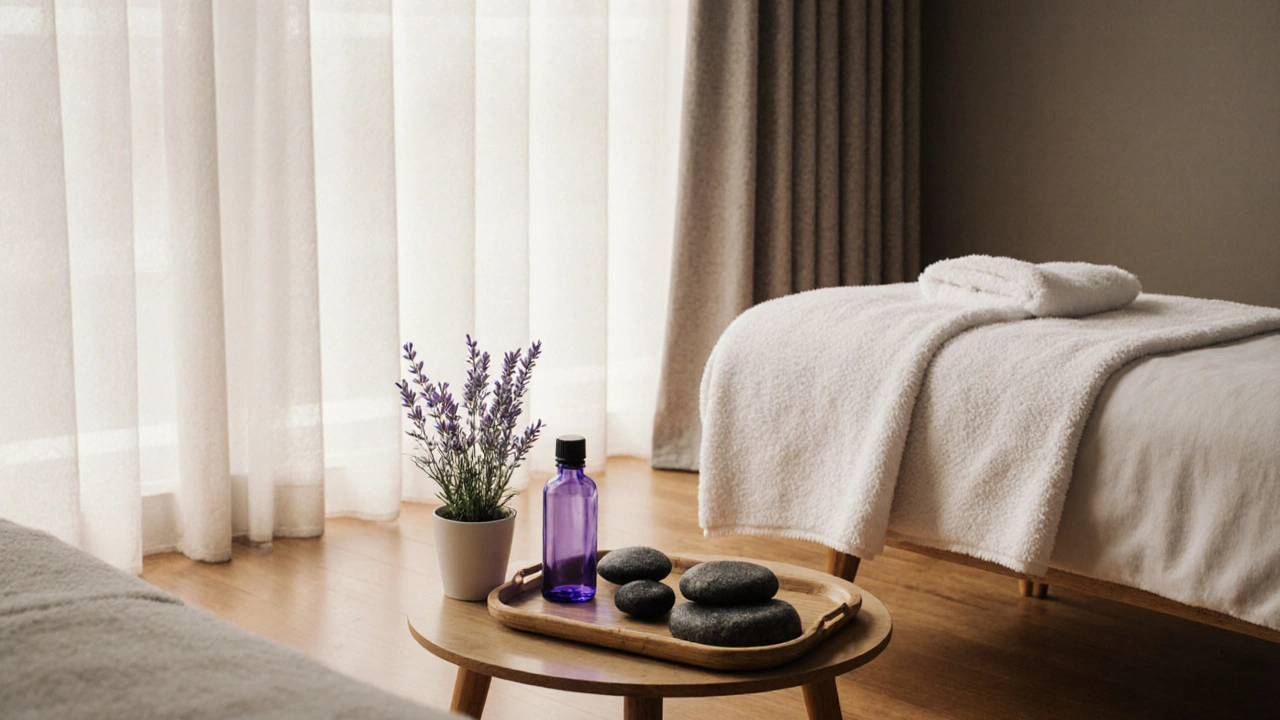
Quick Takeaways
- Each technique targets different muscles and stress points, so you can pick one that matches your needs.
- Most sessions last 60-90 minutes and cost between $70 and $130 in Amsterdam.
- Safety tips include staying hydrated, communicating pressure preferences, and watching for contraindications.
- Many studios offer trial packages, making it easy to experiment with several styles.
- Try at least three techniques this month to discover which gives you the best relief.
What Are Body Massage Techniques?
Body massage techniques are structured ways of applying pressure, movement, and sometimes heat to the soft tissues of the body. They range from light, soothing strokes to deep, targeted pressure. The goal is to improve circulation, release tension, and boost overall wellbeing. Whether you’re an athlete recovering from a marathon or a busy professional looking for a mental reset, there’s a method that fits.
Why Explore Different Techniques?
Each style works with the body in a unique way. Some focus on relaxation, others on muscle repair, and a few even support the immune system. Trying several methods helps you understand what your body responds to best, prevents boredom, and can address multiple issues at once. Plus, many spas in Amsterdam now blend techniques, giving you a custom experience.
Top 10 Body Massage Techniques to Try Today
-
Swedish massage is a gentle, full-body massage that uses long, flowing strokes to promote relaxation and improve blood flow. It’s ideal for beginners because the pressure stays light to moderate. Expect a calming atmosphere, soft music, and a focus on overall harmony.
-
Deep tissue massage is a firmer technique that works deeper layers of muscle and fascia to release chronic tension. Athletes and office workers love it for addressing knots that refuse to budge. Therapists use slower, more concentrated strokes, often on the back, shoulders, and legs.
-
Hot stone massage is a therapy that incorporates heated basalt stones to warm muscles, allowing deeper work without excessive pressure. The stones are placed on key points and may be moved across the skin, creating a soothing, lingering heat.
-
Thai massage is a rhythmic, assisted stretching practice that blends yoga‑like positions with pressure along energy lines. Practitioners use their hands, elbows, knees, and feet, often keeping you fully clothed. It feels more like a workout for flexibility.
-
Trigger point massage is a focused approach that isolates painful knots (trigger points) and applies sustained pressure to deactivate them. It’s especially effective for localized pain in the neck, shoulders, and lower back.
-
Sports massage is a combination of techniques designed to prepare athletes for performance, aid recovery, and prevent injury. Sessions often start with a warm‑up, move into deeper work, and finish with stretching.
-
Aromatherapy massage is a gentle massage that incorporates essential oils chosen for their calming, uplifting, or anti‑inflammatory properties. The scent adds a mental dimension to the physical relief.
-
Shiatsu is a Japanese finger‑pressure method that works along meridian lines to balance energy flow. Therapists press with thumbs, fingers, and palms while you lie fully clothed on a mat.
-
Lymphatic drainage massage is a light, rhythmic technique that stimulates the lymphatic system to reduce swelling and boost immune function. It’s popular after surgery or for those dealing with chronic edema.
-
Tuina massage is a Chinese therapeutic practice that blends kneading, rolling, and acupressure to treat musculoskeletal problems. It often incorporates principles of Traditional Chinese Medicine.
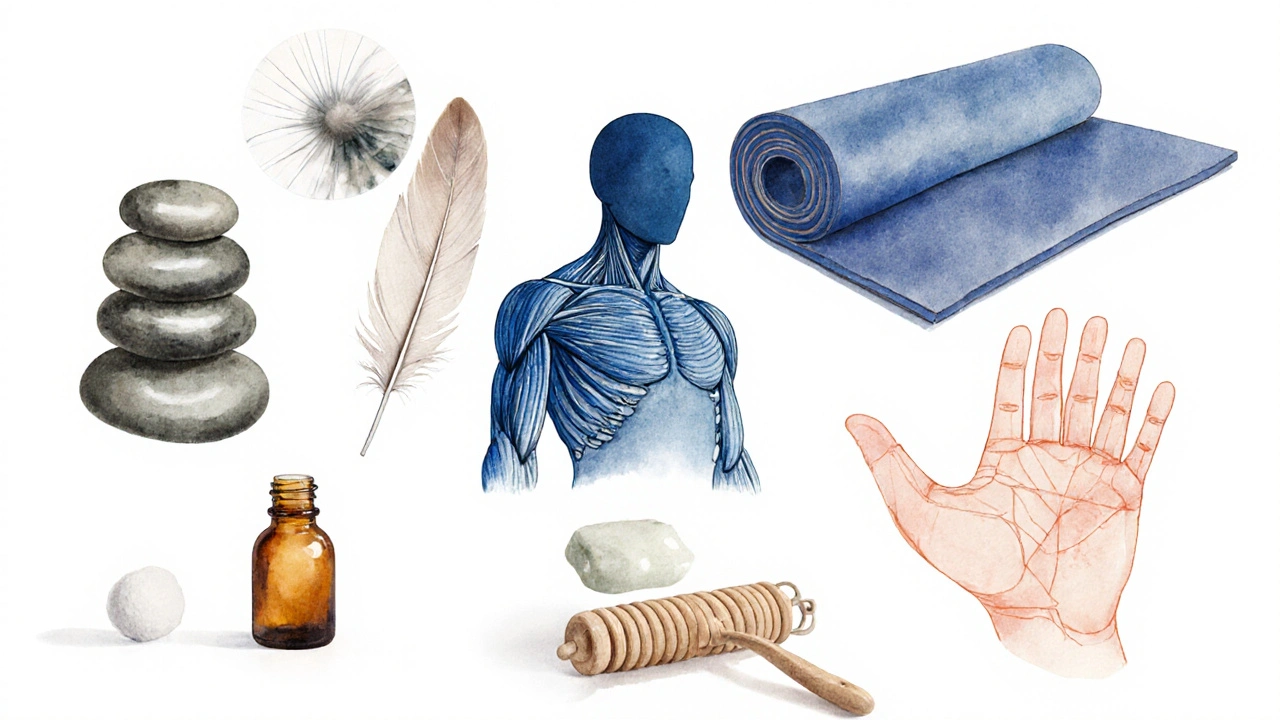
How to Choose the Right Technique for You
Start by thinking about your primary goal. Want to unwind after a stressful week? Swedish or aromatherapy massage will likely hit the spot. Need to tackle a stubborn knot from long hours at a desk? Deep tissue or trigger point massage works best. If you’re training for a marathon, a sports massage can improve flexibility and reduce injury risk. Don’t be afraid to mix-many Amsterdam studios let you customize by combining, say, a hot‑stone session with a brief stretch from Thai massage.
Where to Find These Techniques in Amsterdam
Amsterdam’s wellness scene is dense, with studios scattered from the Jordaan to De Pijp. Look for keywords like “Swedish massage Amsterdam” or “hot stone therapy near Canal Ring” when searching online. Many places list their specialties on their websites, and a quick call can confirm whether a therapist is certified in, for example, Shiatsu or Lymphatic drainage. Booking platforms such as Treatwell also let you filter by technique, price, and client rating.
What to Expect During a Session
After you arrive, you’ll fill out a short health questionnaire-this helps the therapist tailor pressure and avoid contraindications. You’ll then be shown a private treatment room; most spas keep the temperature around 24°C and dim the lights. The therapist will ask how much pressure you prefer; don’t hesitate to speak up. Sessions typically begin with a brief warm‑up, move into the core technique, and end with gentle stretching or a light oil rub.
Typical Pricing and Booking Tips
In 2025, a 60‑minute Swedish or aromatherapy massage in central Amsterdam averages €85, while specialized options like hot stone or sports massage run €110-€130. Many studios offer first‑time discounts of 10% and package deals (5sessions for the price of 4). Book online when possible; it secures your preferred therapist and lets you add notes about pressure or areas of focus. If you’re trying a new technique, ask for a shorter 45‑minute introductory slot.
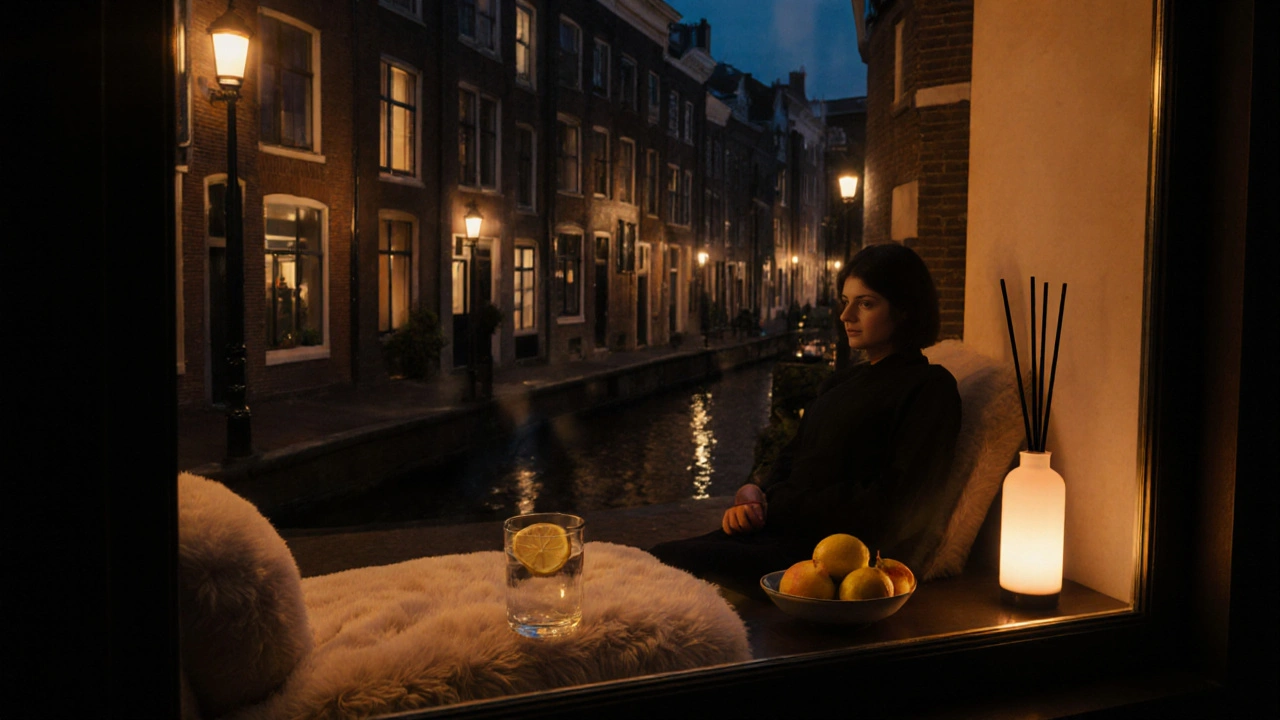
Safety First: Tips for a Positive Experience
- Stay hydrated before and after the massage; water helps flush out toxins released during deep work.
- If you have skin conditions, recent surgeries, or chronic illnesses, discuss them with the therapist beforehand.
- Communicate pressure levels clearly; a good therapist will adjust in real time.
- Avoid heavy meals right before a session; a light snack is fine.
- Give yourself 24hours after an intense deep‑tissue or sports massage before engaging in vigorous exercise.
Comparison Table: Body Massage Techniques vs. Key Attributes
| Technique | Intensity | Best For | Typical Session Length |
|---|---|---|---|
| Swedish | Low‑to‑moderate | Relaxation, stress relief | 60‑90min |
| Deep Tissue | High | Chronic muscle pain, knots | 60‑90min |
| Hot Stone | Moderate | Muscle tension, circulation | 75min |
| Thai | Moderate‑high | Flexibility, energy flow | 90‑120min |
| Trigger Point | High | Localized pain spots | 45‑60min |
| Sports | Moderate‑high | Pre‑/post‑exercise recovery | 60‑75min |
| Aromatherapy | Low‑to‑moderate | Emotional balance, stress | 60min |
| Shiatsu | Moderate | Energy balance, tension | 60min |
| Lymphatic Drainage | Low | Swelling, immune support | 45‑60min |
| Tuina | Moderate | Musculoskeletal issues, holistic health | 60‑90min |
Frequently Asked Questions
How often should I get a body massage?
For general wellness, a monthly session works well. If you’re dealing with specific muscle issues, twice a month can speed recovery, but always listen to how your body feels.
Can I combine two techniques in one session?
Yes-many therapists blend styles, such as starting with a Swedish warm‑up and finishing with targeted trigger‑point work. Ask the spa about custom packages.
Is massage safe during pregnancy?
Prenatal massage, a gentle variant of Swedish, is safe for most pregnant women. Always inform the therapist about your trimester and any complications.
Do I need to tip my masseur?
Tipping is customary in the Netherlands but not mandatory. A 5‑10% tip for excellent service is appreciated.
What should I wear for a hot stone massage?
Loose, breathable clothing is best. The therapist will drape you with towels, exposing only the area being worked on.
Ready to Experience the Benefits?
If you’re curious about how a new technique feels, start with a 45‑minute introductory session. Book online or give the spa a quick call, mention the specific technique you want, and enjoy the tiny break your body deserves.
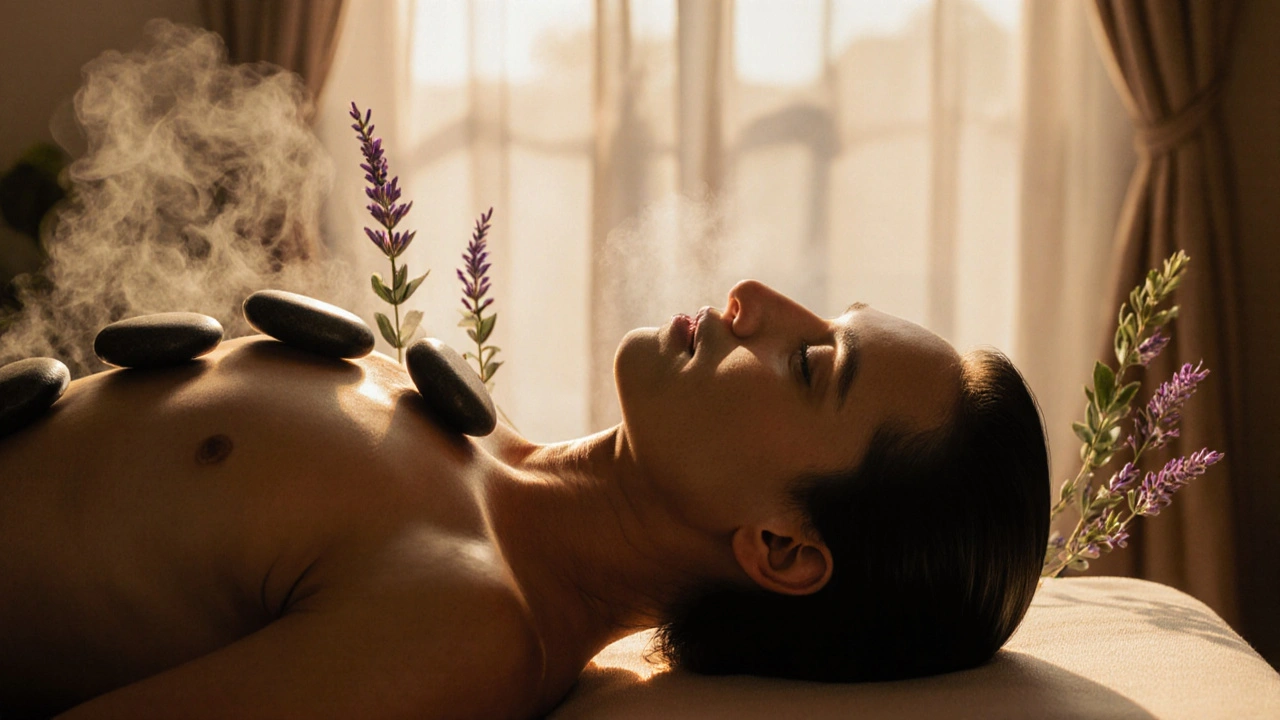

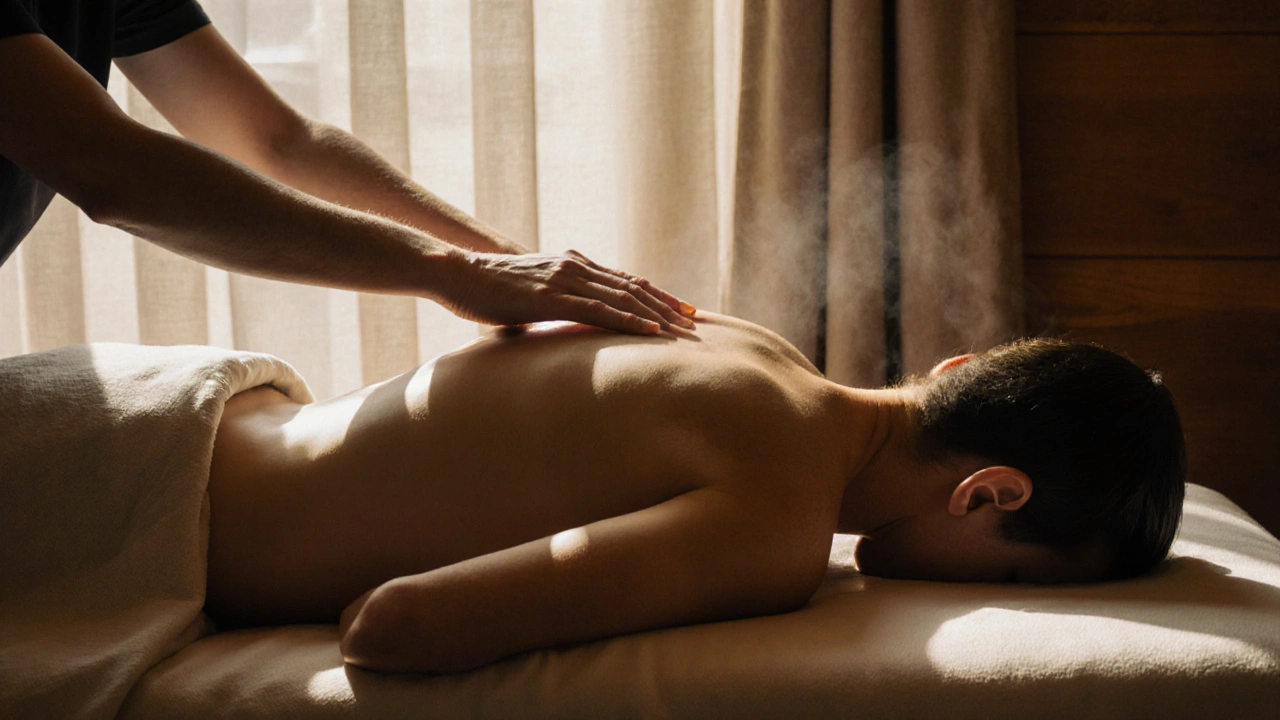
Piotr Williams
October 15, 2025 AT 18:23Wow, another list of massages???, really???, who needs this???
Matt H
October 15, 2025 AT 23:57Yo, this rundown is like a power‑up for anyone looking to level‑up their recovery game! The way you break down intensity vs. purpose makes it easy to pick a protocol that aligns with training cycles. I love the mention of integrating hot‑stone heat therapy with sport‑specific fascia release – that synergy is pure kinetic optimization. Plus, the pricing snapshot for Amsterdam studios gives a realistic budget window for frequent athletes. Dive in, book a trial, and watch those performance metrics climb.
Ashok Sahu
October 16, 2025 AT 08:17Hey folks, great to see such a comprehensive guide! Remember that each technique can be a cultural exchange, so it’s cool to ask the therapist about the origins behind the strokes. If you’re nervous about trying something intense like deep tissue, start with a lighter Swedish session and let the practitioner adjust the pressure. Staying hydrated and communicating your comfort level are universal tips, no matter where you’re getting the massage. Also, don’t forget that many places in Amsterdam offer combo packages – you can blend a Thai stretch with a calming aromatherapy blend. It’s all about listening to your body and having fun exploring.
Vincent Jackson
October 16, 2025 AT 15:13Totally agree with the energy, Matt! I think the jargon is spot on, but I’d add that newbies should definitely start with a short intro sesh – 45 mins is perfect. Also, don’t be scared to ask for a little less pressure, especially with hot stone – the heat does the work. Gotta say, the tip about checking therapist certs in Amsterdam is golden, saves a lot of hassle. I’m definitely gonna try the combo you mentioned, kinda excited!
Jason Hancock
October 16, 2025 AT 21:20While the guide paints a rosy picture, let’s not forget that many of these techniques are over‑hyped commercial fluff. First, the claimed “immune boost” from lymphatic drainage lacks solid peer‑reviewed evidence; it’s more marketing than medicine. Second, the supposed “energy balance” from Shiatsu is rooted in dubious metaphysics rather than measurable outcomes. Third, blending multiple styles in one session may actually confuse the nervous system, leading to overstimulation rather than relief. Fourth, the pricing in Amsterdam, though listed, often excludes mandatory extras like premium oils or specialized tables, inflating the cost unseen. Fifth, many practitioners tout certifications that are not standardized across Europe, making quality control a nightmare. Sixth, the emphasis on “hydration” is vague – no guidance on electrolyte balance or timing, which can be critical after deep tissue work. Seventh, the recommendation to avoid heavy meals is simplistic; a balanced light snack can actually improve circulation during massage. Eighth, the idea that a single 45‑minute intro can capture the essence of a technique overlooks the learning curve for both client and therapist. Ninth, the guide fails to address contraindications for people with certain cardiovascular conditions, a serious oversight. Tenth, the assumption that all studios maintain a 24°C room temperature ignores personal thermal comfort preferences. Eleventh, the suggestion to tip 5‑10% in the Netherlands may conflict with local customs where tipping is less expected. Twelfth, the claim that regular monthly sessions are optimal for general wellness is not backed by longitudinal studies; frequency should be individualized. Thirteenth, the statement that aromatherapy oils always have anti‑inflammatory properties ignores potential allergic reactions. Fourteenth, the article glosses over the environmental impact of disposable linens and oils in high‑turnover spas. Fifteenth, the overall narrative pushes a consumerist agenda, encouraging readers to spend money on a series of “trendy” experiences rather than fostering sustainable self‑care practices. In short, approach this list with a critical eye and do your own research before committing to any of these pricey treatments.
Jill Norlander
October 17, 2025 AT 03:10The preceding commentary, while thorough, unfortunately indulges in hyperbole and speculative assertions unsupported by empirical data. A balanced appraisal would acknowledge the therapeutic potential of the modalities while also recognizing the limitations inherent in anecdotal reporting. Clinicians and clients alike should prioritize evidence‑based practice and informed consent, especially regarding contraindications. Ultimately, a prudent approach emphasizes individualized assessment over blanket recommendations.